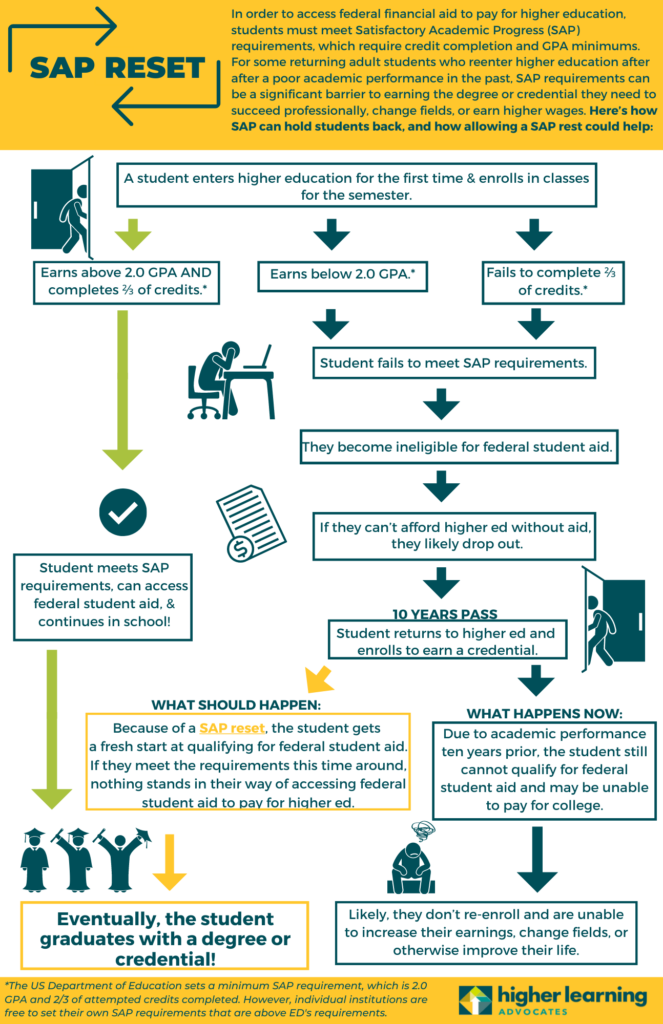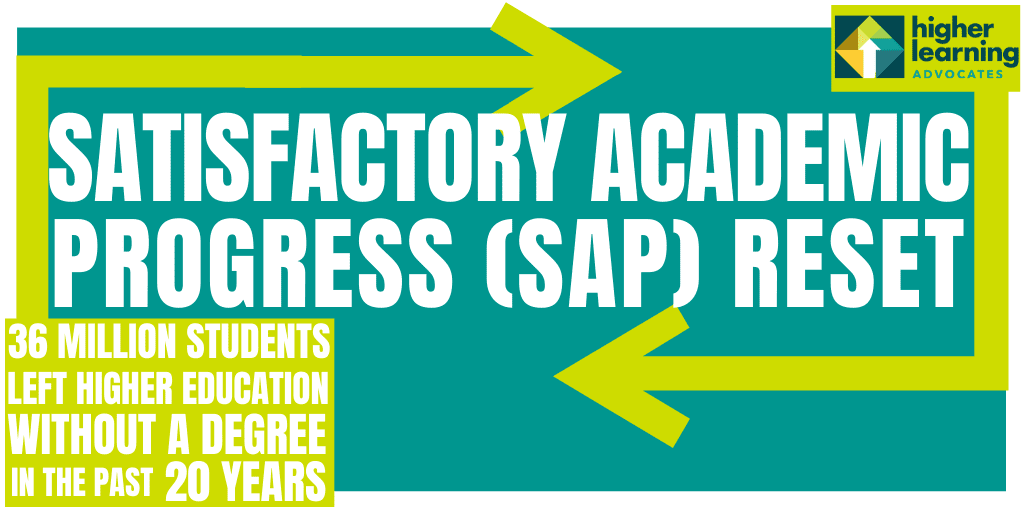Satisfactory Academic Progress: Making Financial Aid Work for Today’s Students
A satisfactory academic progress, or SAP, reset can make college more affordable for low-income Americans, especially the 39 million with some college and no credential (SCNC) population. Higher Learning Advocates’ analyzed how in a new higher education policy brief, Satisfactory Academic Progress: Making Financial Aid Work for Today’s Students. In the brief, we highlight how…
Read MoreUpdated 101: Today’s Students
Today’s Students 101 Higher Learning Advocates’ Today’s Students 101 contextualizes who today’s students are and why their needs matter to help inform essential higher education policy conversations. Understanding who today’s students are is fundamental to creating a higher learning system that leads to their success. HLA’s Updated Today’s Students 101 features: The newest data…
Read MoreBraided Funding Backgrounder
Today’s students follow myriad pathways to and through higher learning. Providing today’s students with wraparound supports and tools to navigate complex career pathways systems can greatly boost their chances of success, but requires multiple resources. For students, this means the programs they rely on for career and income mobility have limited sets of resources from…
Read MoreSatisfactory Academic Progress (SAP) Backgrounder
Satisfactory Academic Progress (SAP) is a federal provision that requires institutions to establish criteria a student must meet in order to remain eligible for federal student aid, such as Pell Grants and student loans. Typically, to meet SAP requirements, students must meet a minimum grade point average (GPA), or its equivalent, and complete a minimum…
Read MoreToday’s Students Returning Adults Factsheet
Adult students make up a growing share of today’s students, including adults returning to school, who are likely to be in their late 20s or 30s. View the factsheet here.
Read MoreSAP Reset Infographic
In order to access federal financial aid to pay for higher education, students must meet Satisfactory Academic Progress (SAP) requirements, which require credit completion and GPA minimums. For some returning adult students who reenter higher education after a poor academic performance in the past, SAP requirements can be a significant barrier to earning the degree…
Read MoreThe Playbook for Today’s Students
Higher learning is the ticket to economic opportunity for Americans, as well as to rebuilding our country’s economy. But we are failing too many of today’s students. Fewer than 67% of Americans enter a higher education program, and of those, only 60 percent finish with a credential. A large-scale overhaul of higher education policy is…
Read MoreHigher Education Policy & Regulatory Transition Recommendations
WASHINGTON (October 6, 2020) — Higher Learning Advocates provided recommendations to advance higher education policy and regulations in key areas that will empower our nation’s students to obtain the skills they need to gain employment and succeed in the 21st century, especially in light of the ongoing COVID-19 pandemic. Download the memorandum here.
Read MoreWhat Works for Today’s Students—Satisfactory Academic Progress Reset
Over the past 20 years, 36 million students have enrolled in higher education but have not finished a degree. Although today’s students are completing college at higher rates than before, four out of ten students still do not earn a degree within six years. Download our new policy brief, What Works for Today’s Students—Satisfactory Academic Progress Reset,…
Read More101: Part-time Students
Today’s students are more diverse than previous generations. Twenty-four percent are parents, 37 percent are older than 25, 49 percent are financially independent, and 42 percent are students of color. About 40 percent of today’s students attend part-time. For more background information on part-time students download 101: Part-Time Students. This 101 details who part-time students…
Read More


